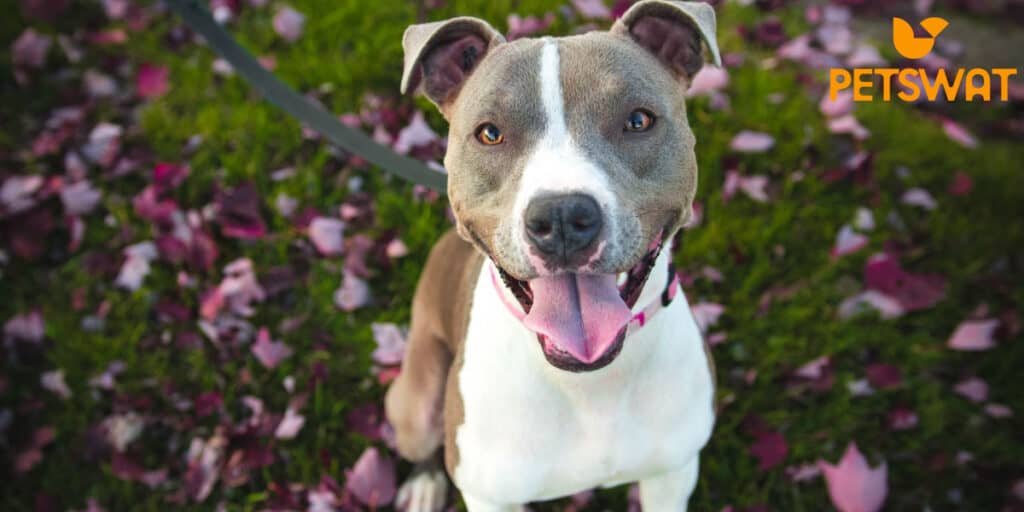The debate between Bull Terrier vs Pitbull has been a controversial topic for many years. Both breeds have their own unique characteristics and qualities that make them beloved by their owners, but they also have their fair share of misconceptions and stereotypes. In order to better understand this ongoing debate, it is important to delve into the history of both breeds and explore the reasons behind the controversy.
Bull Terriers originated in England in the 19th century, where they were initially bred for dog fighting. However, over time, they were bred to be more family-friendly and became popular as companion dogs.

On the other hand, Pitbulls have a more complex history. They were originally bred in England for bull-baiting, a cruel sport that involved dogs attacking bulls. When bull-baiting was banned in the 19th century, Pitbulls were used for dog fighting instead. Despite their violent past, Pitbulls were also bred to be loyal and affectionate towards humans.

The ongoing debate between Bull Terriers and Pitbulls stems from the negative stereotypes associated with both breeds. Many people believe that Bull Terriers are aggressive and dangerous due to their history in dog fighting, while others argue that Pitbulls are inherently aggressive and should be banned. These misconceptions have led to breed-specific legislation in some areas, which restricts or bans ownership of certain breeds based on their appearance or perceived temperament.
Physical Characteristics of Bull Terrier and Pitbull
When comparing the physical characteristics of Bull Terriers and Pitbulls, there are several notable differences. Bull Terriers are medium-sized dogs with a muscular build. They typically weigh between 50-70 pounds and stand around 21-22 inches tall at the shoulder. They have a distinctive egg-shaped head and a short, glossy coat that comes in a variety of colors, including white, brindle, and black.
Pitbulls, on the other hand, come in several different breeds, including the American Pit Bull Terrier, Staffordshire Bull Terrier, and American Staffordshire Terrier. They are also medium-sized dogs, but tend to be slightly larger than Bull Terriers. Pitbulls can weigh anywhere from 30-80 pounds and stand around 17-21 inches tall at the shoulder. They have a more muscular and athletic build compared to Bull Terriers. Their coat can be short or medium in length and comes in a variety of colors, including brindle, fawn, and blue.
Temperament and Personality Traits of Bull Terrier and Pitbull
One of the most common misconceptions about both Bull Terriers and Pitbulls is that they are inherently aggressive and dangerous. However, this is far from the truth. Both breeds can be incredibly loyal, protective, and affectionate towards their owners.
Bull Terriers are known for their clownish and mischievous nature. They are often described as “kid-friendly” dogs due to their playful and energetic personalities. While they can be stubborn at times, Bull Terriers are generally eager to please their owners and respond well to positive reinforcement training methods. They are also known for their love of human companionship and can form strong bonds with their families.
Pitbulls, on the other hand, are often described as “people-loving” dogs. Despite their history in dog fighting, Pitbulls are known for their loyalty and affection towards humans. They are often referred to as “nanny dogs” due to their gentle and protective nature towards children. Pitbulls are highly trainable and respond well to consistent and positive training methods. With proper socialization and training, Pitbulls can be excellent family pets.
Training Techniques for Bull Terrier and Pitbull
Training is an essential part of owning any dog, and Bull Terriers and Pitbulls are no exception. Early socialization and obedience training are particularly important for both breeds to ensure they grow up to be well-behaved and balanced dogs.
Early socialization is crucial for Bull Terriers and Pitbulls to expose them to different people, animals, and environments. This helps them develop confidence and prevents fear-based aggression. It is important to introduce them to new experiences gradually and in a positive manner. Exposing them to a variety of situations will help them become well-rounded dogs that can adapt to different environments.
Positive reinforcement training methods work best for both Bull Terriers and Pitbulls. This involves rewarding desired behaviors with treats, praise, or play, while ignoring or redirecting unwanted behaviors. Harsh training methods or punishment can be counterproductive and may lead to fear or aggression in these breeds. Consistency, patience, and positive reinforcement are key to successful training.
Health Concerns and Medical Issues for Bull Terrier and Pitbull
Like all dog breeds, Bull Terriers and Pitbulls are prone to certain health problems. It is important for owners to be aware of these issues and take preventative measures to ensure their dogs live long and healthy lives.
Bull Terriers are known to have a higher risk of developing certain genetic conditions, such as deafness, kidney disease, and skin allergies. Regular veterinary check-ups, a balanced diet, and proper grooming can help prevent or manage these health issues. It is also important to provide regular exercise and mental stimulation to prevent obesity, which can lead to other health problems.
Pitbulls are prone to certain health conditions as well, including hip dysplasia, allergies, and heart disease. Regular exercise, a healthy diet, and routine veterinary care are essential for maintaining their overall health. Responsible breeding practices can also help reduce the risk of genetic conditions in Pitbulls.
Exercise and Activity Requirements for Bull Terrier and Pitbull
Both Bull Terriers and Pitbulls are energetic breeds that require regular exercise and mental stimulation to prevent boredom and destructive behavior.
Bull Terriers have moderate exercise needs and enjoy a mix of physical and mental stimulation. Daily walks, playtime, and interactive toys can help keep them physically and mentally engaged. They also enjoy participating in dog sports, such as agility or obedience training, which can provide additional mental stimulation.
Pitbulls, on the other hand, have higher energy levels and require more exercise compared to Bull Terriers. They benefit from daily walks, runs, or play sessions in a securely fenced yard. Pitbulls also enjoy activities that challenge their physical abilities, such as fetch or tug-of-war. Mental stimulation is equally important for Pitbulls, and puzzle toys or training sessions can help keep their minds sharp.
Socialization Needs for Bull Terrier and Pitbull
Socialization is crucial for both Bull Terriers and Pitbulls to ensure they are comfortable and well-behaved around people and other animals.
Bull Terriers should be exposed to different people, animals, and environments from a young age. This helps them develop good social skills and prevents fear or aggression towards unfamiliar situations. Gradual introductions to new experiences, positive reinforcement, and rewards can help them feel more confident in various social settings.
Pitbulls also benefit from early socialization to ensure they are friendly and well-mannered around people and other animals. Positive experiences with different types of people, dogs, and environments can help them become well-adjusted adults. It is important to expose them to positive interactions and reward them for calm behavior.
Legal Restrictions and Breed-Specific Legislation for Bull Terrier and Pitbull
Breed-specific legislation (BSL) refers to laws or regulations that target specific dog breeds or types based on their appearance or perceived temperament. These laws often impose restrictions or bans on owning certain breeds, including Bull Terriers and Pitbulls.
BSL has been a controversial topic, with proponents arguing that it helps protect public safety and reduce dog attacks, while opponents argue that it is ineffective and unfairly targets certain breeds. The effectiveness of BSL in reducing dog bites or attacks is highly debated, as studies have shown mixed results.
It is important for potential owners to be aware of any legal restrictions or requirements for owning Bull Terriers or Pitbulls in their area. Some jurisdictions may require special permits, liability insurance, or additional training for owners of these breeds. It is also important to research local laws and regulations before moving to a new area to ensure compliance.
Pros and Cons of Owning a Bull Terrier or Pitbull
Owning a Bull Terrier or Pitbull comes with its own set of advantages and disadvantages. It is important for potential owners to consider these factors before choosing a breed that best suits their lifestyle and preferences.
Advantages of owning a Bull Terrier include their playful and affectionate nature, their ability to form strong bonds with their families, and their moderate exercise needs. They are also known for their clownish personalities and can provide endless entertainment for their owners. However, Bull Terriers can be stubborn at times and may require consistent training and socialization to prevent behavioral issues.
Pitbulls have many advantages as well, including their loyalty, affection towards humans, and their ability to be excellent family pets. They are often described as “people-loving” dogs and can be incredibly gentle and protective towards children. Pitbulls are also highly trainable and respond well to positive reinforcement methods. However, they require more exercise compared to Bull Terriers and may not be suitable for owners with limited time or energy for daily physical activity.
Conclusion: Which Breed is the Ultimate Showdown Winner?
In the ultimate showdown between Bull Terriers and Pitbulls, it is clear that both breeds have their own unique qualities and characteristics that make them beloved by their owners. While there are misconceptions and stereotypes associated with both breeds, it is important to judge each dog as an individual and not make assumptions based on their breed alone.
Bull Terriers are known for their playful and mischievous nature, while Pitbulls are often described as loyal and affectionate towards humans. Both breeds require early socialization, positive reinforcement training, and regular exercise to ensure they grow up to be well-behaved and balanced dogs.
Ultimately, the decision of which breed is the “winner” comes down to personal preference and lifestyle. Potential owners should consider their own needs, preferences, and ability to meet the exercise and training requirements of each breed before making a decision. Regardless of which breed is chosen, responsible ownership, proper training, and socialization are key to raising a happy and well-adjusted dog.
Originally posted 2023-04-08 04:13:05.
Johny is a dedicated pet enthusiast, author, and the driving force behind the insightful content at PetSWAT. With a deep passion for animals and a wealth of knowledge acquired through years of experience, Johny brings a unique perspective to the world of pet care and companionship.



